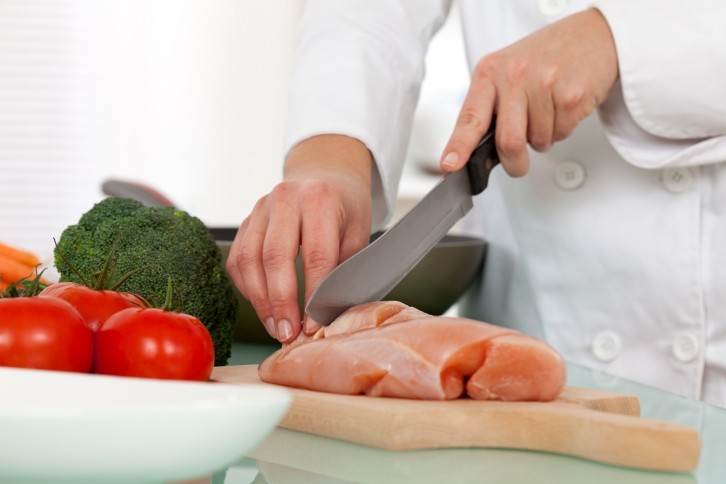Feature
'Meating' demand: Animal-based proteins versus cell-based agriculture

The global market value of the meat industry is expected to rise from £738.7bn in 2021 to more than £1.06 trillion in 2027, according to Statista. In the UK alone, revenue in the fresh meat market amounted to £14.27bn in 2023 and is forecast to grow annually by 4.12% (CAGR 2023-2028).
Of the protein groups, global banking company, Rabobank, argued that the poultry market was well positioned to gradually improve in the last quarter of 2023 into early 2024, following several months of slow growth. In a recent report, it found that lower feed costs are expected to support market growth, making poultry more affordable and helping industry to recover.
“After a period of slow poultry consumption growth due to a weak global economy and rising prices resulting from cost increases, global demand has room for some recovery,” said Nan-Dirk Mulder, senior analyst – animal protein at Rabobank.
“This is driven mainly by lower feed costs and, therefore, lower chicken prices. Poultry should be able to benefit from its relatively competitive pricing in many markets compared to other proteins like beef, pork and alternative proteins.”
It’s clear that the current geopolitical climate has made an impact on global poultry sales, and processor Seara is one of the businesses that has seized the opportunity to grow along with the trend.
As Alexandre Mattos, head of sales and operations for the UK and Republic of Ireland at Seara explained: "With the current economic volatility and unprecedented food inflation, we’ve seen an increasing demand for our chicken products as consumers prioritise sustainably produced, nutritious and affordable options for their shopping basket.
“We’ve sought to continually diversify our extensive range of chicken products to meet the evolving needs of customers. We’ve also noticed a huge growth in demand for convenience products which led us to our latest brand innovation and ‘fully cooked’ range that seeks to consciously address this concern by minimising preparation time for customers.”
Cell-based meat is booming but could fail to meet demand
One corner of the meat industry that has been garnering a lot of attention over the past few years has been the rapid development of the cell-based meat sector – cultivated meat grown from individual cells of animals that cuts out the need to slaughter them. In an ideal world, producers would only ever need one animal to donate its cells, removing the need to rear hundreds of poultry and cattle to continue feeding the world.
There’s been plenty of hype behind the technology involved in cell-based meat, reflected in the astronomical amount of money being invested into the industry. Corporate finance house Oghma Partners’ latest UK Food and Beverage Sector M&A report found that global cell-based meat start-up activity has exploded rapidly from initial emergence in the late 2010s.
Investment in the industry has jumped from £144.4m between 2016-2019 (50 companies and 90 deals) to £1.76bn during 2020-2021 (86 companies and 159 deals). In total, Oghma estimated that £2.6bn has been invested in the cell-based meat area since 2016.
However, only a handful of companies have scooped up the lions-share of the funding –UPSIDE Foods’ £555.1m funds raised represents 21.5% of the global total. In all, the top 5 cell-based meat manufacturers (UPSIDE Foods, Believer Meats, Wildtype, Aleph Farms and Mosa Meat) accounted for 46.9% of all funds raised between 2016-2023 year to date.
More than two thirds (68%) of deal activity were directed toward companies whose activity included the development and production of cell-based meat, with the remaining activity spread across cell-based seafood (17%), ingredients (11%) and pet food (4%).
Potential to replace traditional agriculture
Commenting on the cell-based meat industry’s rapid growth, Mark Lynch – partner at Oghma Partners – said: “A key driver of the rationale behind cell-based protein production is to generate cheap, low carbon protein without the need for antibiotics and in a safe and controlled environment. Cell-based agriculture has therefore, substantial potential as an alternative to traditional agriculture.
“We believe that this potential has driven interest and speculative investment into the industry. Significant investment into the cell-based meat industry has led to increasing cap-ex spend with many companies scaling up production capacity and R&D facilities.”
The sheer volume of investments being thrown around in this space creates even greater potential for cell-based meat products to make it to market and into consumers’ hands – something that still has not manifested. But Lynch warned that that fountain of riches is slowly starting to dry up if the figures continue the way they are.
“Money for new investment is now harder to come by, as the slowdown in funding so far in 2023 demonstrates,” he explained. “The industry will be challenged to deliver sales to consumers and to stretch funding runways to the point of delivering profitability. We see a shake-out similar to that we are seeing in the plant-based meat sector, with consolidation amongst the players most likely.”
Achieve precise recipe control in your meat applications with Reiser
For small to medium sized butchers who use existing grind-mix-grind systems, one of the main challenges is streamlining this process into a one-step operation which will lead to increased productivity and yield when unlocked.
The brand new Seydelmann K60 MC Ultra Cutter was developed to help small to medium size butchers achieve just that. The benefit of running an array of applications which include but not limited to meat, burgers, meat balls, sausages and snack sticks provides the versatility to place this solution at the heart of your operation.
Furthermore, the benefit of creating up to 24 customisable recipes on the machine ensures there is no possibility to overcut product due to each recipe being programmed to a set time.
To learn more or organize a product trial at our Milton Keynes customer test centre, get in touch now.
Call: 01908 585300
Email: fnyrfhx@ervfre.pbz
While the cell-based meat industry seems to be booming, there are fears that producers will not be able to meet consumer demand. Despite all the investment, the reality of cultured beef burger or 3D printed chicken fillet on the average family’s plate still seems like a distant dream.
A recent study of foodtech, biotech and cell therapy companies by bioprocessing company CellRev found that cost and scalability were the two biggest challenges that will prevent manufacturers from being able to meet the perceived demand for cell-based meat.
An absence of access and availability to enabling technologies that allows manufacturers to aim for higher yields is preventing their ability to scale-up to optimal levels. What’s more, there is a lack of skill and labour needed to be able to facilitate a scaling up of the sector – something which is becoming even more scarce and expensive as the days go on.
Issues across the meat industry
Of course, access to skilled labour is not a unique problem to the cell-based meat industry. The meat industry in general has long suffered from the challenge of bringing people into the sector, with reasons ranging from the public’s negative reception of what the work is like to the inability to source labour from outside the country.
In 2020, the Migration Advisory Committee (MAC) recommended to the Home Office that butchers be placed on the Shortage Occupation List (SOL) – a proposal that the Home Office rejected. Later, in 2023, the MAC’s review of the list didn’t even mention butchers or poultry processors.
Tony Goodger at the Association of Independent Meat Suppliers explained that their reasoning was down to the negative connotations that working in the meat industry had – historically poor working conditions, with low pay and unsociable hours. The MAC concluded that it was concerned that including the occupation on the SOL would simply embed these poor conditions further.
“This is the view of our industry in advice to Government,” said Goodger. “It is wholly negative and we as an industry need to challenge this and demonstrate to school and college leavers that they can find successful and well-paid employment in our industry.
“We have heard from members, large and small that due to staff shortages they run less efficiently, which in turn means that their output costs more to produce and therefore the price has to rise. Furthermore, some have told us that they turned away new business or export orders purely because they don’t have the staff to fulfil them.”

















